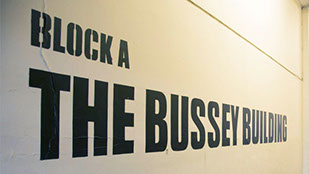Masterplan for a mixed-use development at Copeland Park, in the heart of Peckham's creative quarter
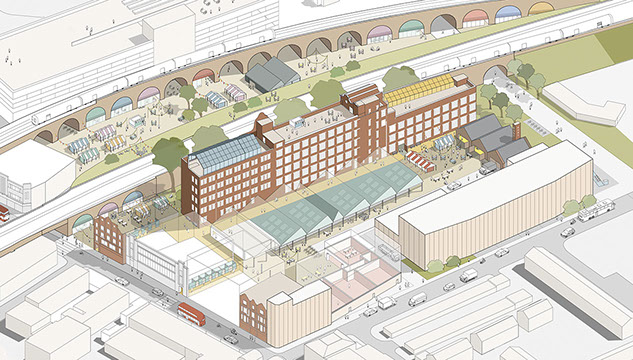
Heritage and conservation
Copeland Park
Copeland Park
London, SE15
Foreword
We designed a competition-winning proposed masterplan for Transport for London. The concept design focuses on Peckham's creative quarter incorporating the historic Bussey Building and Copeland Park industrial site.
Our competition-winning concept design for Copeland Park would galvanise Peckham's creative quarter, unlocking key connections to the town centre and providing inspiring places to live and work. The proposed masterplan won us a place on the Greater London Authority and Transport for London's new £35m Architecture and Urbanism Panel (ADUP2), which attracted 1,100 submissions. Conservation of significant heritage assets combine with sensitive new interventions to produce an array of different spaces. These would cater to a diverse local population including hundreds of creative business owners. Our proposal harnesses the dynamic creative energy that already exists on the site as a catalyst for further regeneration.
The design retains, preserves and makes energy-efficient the heritage fabric of Copeland Park, an industrial site in a Conservation Area. Typical of many infill sites in London, it has interesting but awkward adjacencies, including more than one railway line. Our proposal conserves the 1887 Bussey Building – a vast Victorian former sporting goods factory that is today home to galleries, studios, cafés, theatre companies and faith groups. It adds contemporary glazed spaces to the Bussey’s flat roof, clears low-quality low-rise buildings in surrounding Copeland Park, replacing them with flexible pop-up spaces and c.150 new homes and live-work units.
Heritage and conservation
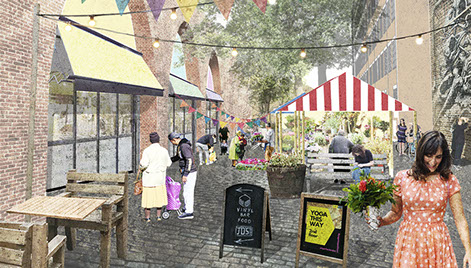
The historic Bussey Building is named after cricket bat manufacturer George Bussey, who built it as a sporting goods factory in 1887. The factory closed in the late-1940s, but by the early 2000s the building began its renaissance as informal studios for artists, designers, makers and small businesses, attracted there by low rents and ample space. The internal layout has particularly lent itself to use by creative start-ups, and promoting the continuance of this usage will enable original dividing walls to be retained.
Externally, our proposal strips back the façades to remove clutter, including redundant services. The retention of assets of character, along with improved circulation and servicing, would provide a secure, safe, sustainable and inspiring contemporary environment for creative start-ups and small businesses.
By keeping light industrial uses towards the centre of the site, there is the opportunity to use existing retail units on Rye Lane as a shop-front for goods made on the site. Enhancements to heritage building elevations along the high street would also serve to promote and strengthen local businesses.
Planning context

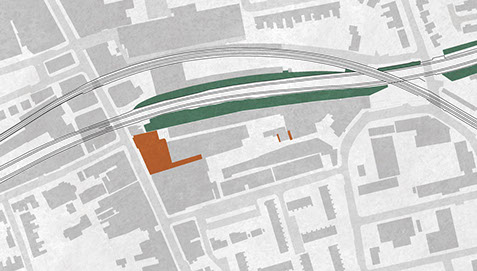

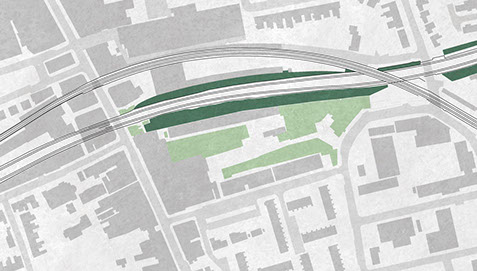
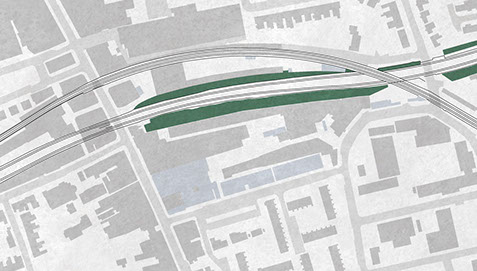
High significance — primary elevations, important historical or architectural features and/ or historic association
Significant — architectural character or quality and/ or notable features, including potential for major enhancement
Some significance — some surviving decorative finishes or elements of historic interest
Low significance — little or no historic or architectural significance, including areas of lost significance
Detrimental elements — aspects that detract from the architectural and/ or heritage significance
Only recently included in the Conservation Area, the fact that the site is untested in planning would necessitate a sensitive heritage appraisal. But our approach goes further, contextualising the Conservation Area Appraisal within a much broader view of the planning and policy background. This view takes in the historical development and urban grain of the local neighbourhood, the site’s archaeological history, specific site guidance such as that in the Peckham and Nunhead Action Plan (which seeks to enhance the burgeoning mix of arts, cultural, leisure, retail, entertainment and business uses here), and the political context and aspirations surrounding the site, which may not always be consistent.
Ultimately, our masterplan celebrates locality by enhancing the setting of important heritage assets and providing new buildings that reflect the character of Copeland Park, promoting Peckham’s renaissance as south London’s creative capital.
Innovation in design and delivery
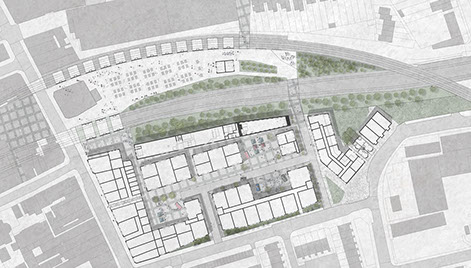
By removing blockages to the existing Rye Lane shopping arcade, our masterplan creates a direct link from the high street to the heart of Copeland Park. Additional retail frontage – as desired by the Local Area Action Plan – is achieved through extending the high street condition to the railway arches. New buildings would form and complete the internal courtyard-like spaces already existing on the site, with building façades opening out onto these shared amenity spaces to generate a vibrant atmosphere through the day and into the evening.
On the Bussey Building, lightweight rooftop interventions that are detailed with reversibility in mind, provide additional space for leisure usage. Meanwhile, low-level infill buildings with mezzanine accommodation supply the opportunity for affordable workspace and light industry such as printers, book-binders and fabric designers. Products can then find their marketplace in the existing retail units on Rye Lane.
Related
SUBSCRIBE
Click below to subscribe to our newsletter or to manage your preferences
Subscribe to our newsletter
© 2020 Lyndon Goode Architects Ltd

